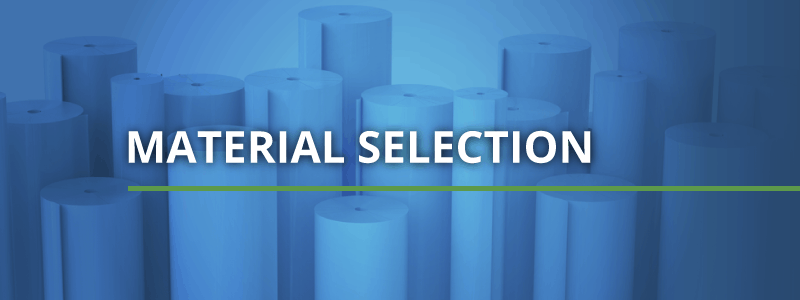How To Choose The Right Material for RF Welding
RF welding technology offers a variety of ways to provide a permanent bond of flexible products. During each stage of the project, from developing a workable production model to bringing your product to market, it is important to have the guidance of an experienced and knowledgeable RF welding professional.
Procuring an RF welding expert early in the process increases the probability of having a successful outcome for your product. To fabricate flexible products, you must choose the correct material — one that has polar molecular properties, which give it high weldability. RF weldable materials are typically heavy but very pliable and are able to withstand temperature variances and meet certain expansion or form requirements.
Request A Quote Click to Call 516.208.6824
Products that provide protection for a person or something else require strong-welded and heavy-stitched seams, which last over the long lifespan of the product. You will need access to a large volume of material resource information, and with the assistance of an RF welding expert, choose the best material for manufacturing your product. You can combine many of these materials to improve product design, increase functionality or expand your product line. Critical properties the material must possess include pliability for the intended function, stability and durability.
Common Material Types for Product Fabrication
Vinyl Materials
By far, Thermoplastic Polyurethane (TPU) rates as the most popular choice of vinyl substrate for flexible products. The TPU category of materials includes nearly any type of polyurethane plastics that possess flexible properties, including shear strength, transparency, elasticity and resistance to oil, grease and abrasion. TPU materials allow manufacturers to choose radio frequency welding to weld vinyl textiles and seal vinyl seams for containment, inflation and contraction properties, and to make air, liquid and vapor leak-proof seals.
Coated Fabrics
Another material option for weldable products consists of woven or knitted fabrics, which have a layer of urethane on one side that makes the material RF weldable. To create a good weld, the coating needs to have a minimum thickness of three to five mil or.003” to .005”.
The ability to add a coated fabric offers tremendous possibilities for fabric-like materials that are weldable with the radio frequency welding/high-frequency welding process. The wide selection of urethane-coated fabrics provides a viable option when looking for materials. Many larger material supplies will offer a custom coating, lamination or a fabric/film combination. It is important to make sure you select the right material and the best option for textile seam welding.
Buffer Materials for Radio Frequency Welding
The material selection process also includes choosing a buffer material, which has a variety of functions. A buffer acts as electrical and thermal insulation serves as dielectric enhancement and compensates for small irregularities in the die surface. As a thermal insulator, the buffer can modify the position of the peak temperature point and make the weld more efficient. This is necessary because the die platens conduct the heat produced by the application away from the RF field, which produces a temperature gradient within the plastic film.
Material options for buffers include polyester and silicone rubber. To prevent arcs across the platen plates, the RF welding operator must use the buffer with tear seal tools as a voltage barrier.
Contact The Experts at Mark Peri Today!
Questions about choosing the right material for your rf welding application? Our dedicated team of expert support staff is happy to help. Contact us today!

